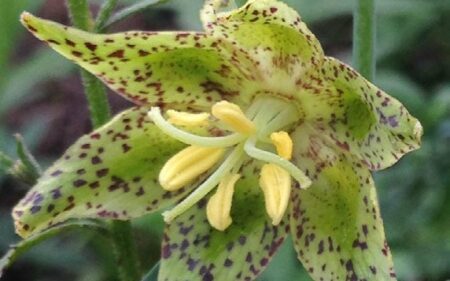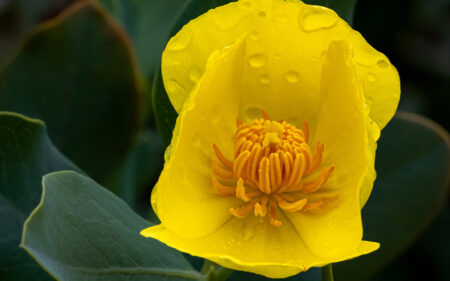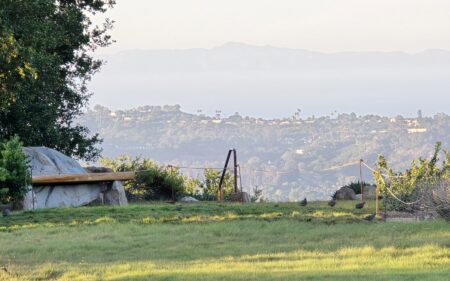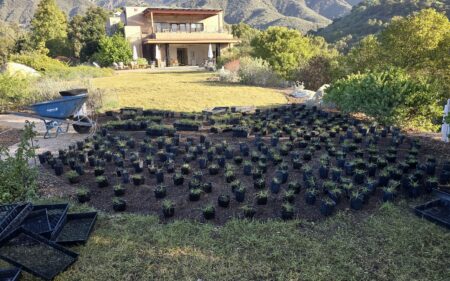You Can Have It All With a Living Oak Fuelbreak
What’s almost as good as the extraordinary biological diversity that oak woodlands support? These oaks (Quercus sp.) may also help to protect our built spaces from wildfire. Both scientists and firefighters alike have been suggesting this for decades. In 1962, scientist Phillip Wells noted that coast live oaks (Quercus agrifolia) create a mesic environment that reduces wind speeds and temperatures, and suggested planting them around residential areas and roadsides to guard against fire. But hard data supporting oaks’ use as a living fuelbreak is lacking – and so are public demonstrations of this concept.
To meet both of these needs, Santa Barbara Botanic Garden, a member of California Oaks Coalition, installed 216 young coast live oaks in the fall of 2023, as part of a comprehensive Regional Wildfire Mitigation Program in partnership with the nonprofit SIG-NAL. We planted them in three patches amongst remnant mature oak trees, where they can grow to eventually form a continuous oak woodland. We also installed two Onset HOBO weather stations: one under the canopy of a large, mature oak and one in an open area near the recently planted oak seedlings. This design allows us to test the idea that oaks mitigate fire weather variables, via both near-term and long-term comparisons, as our young oaks get larger and the data presumably converge.
With data collected every 15 minutes, there is a lot, and many ways to look at it. We can already see some interesting results by comparing averages across the first year, however. Not surprisingly, average summer temperatures and summer wind gust speeds are significantly lower under the mature oak canopy. But interestingly, average humidity is lower under the oak canopy in the summer than in the open, while it is higher under the oak canopy in the winter. Perhaps the canopy is capturing and retaining moisture from rainfall in the winter but blocking the lighter fog drip in the summer?
Another piece of the flammability puzzle is live fuel moisture. As part of the Regional Wildfire Mitigation Program, we added coast live oaks to a repertoire of live fuel moisture monitoring we had been conducting using two chaparral taxa since 2013, helping regional agencies to assess fire risk. Data show that between January and October of 2023, moisture levels dropped for all three species, but stayed 20-25% greater for oaks (average 60% for chamise, 65% for bigpod ceanothus, and 85% for coast live oak).
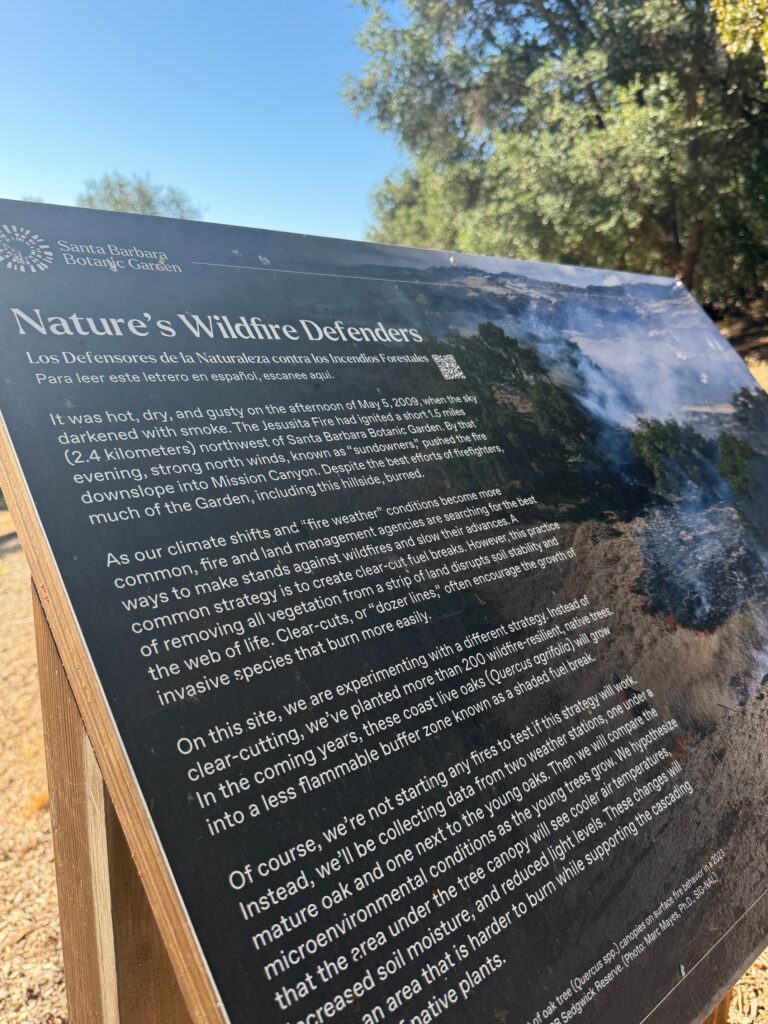
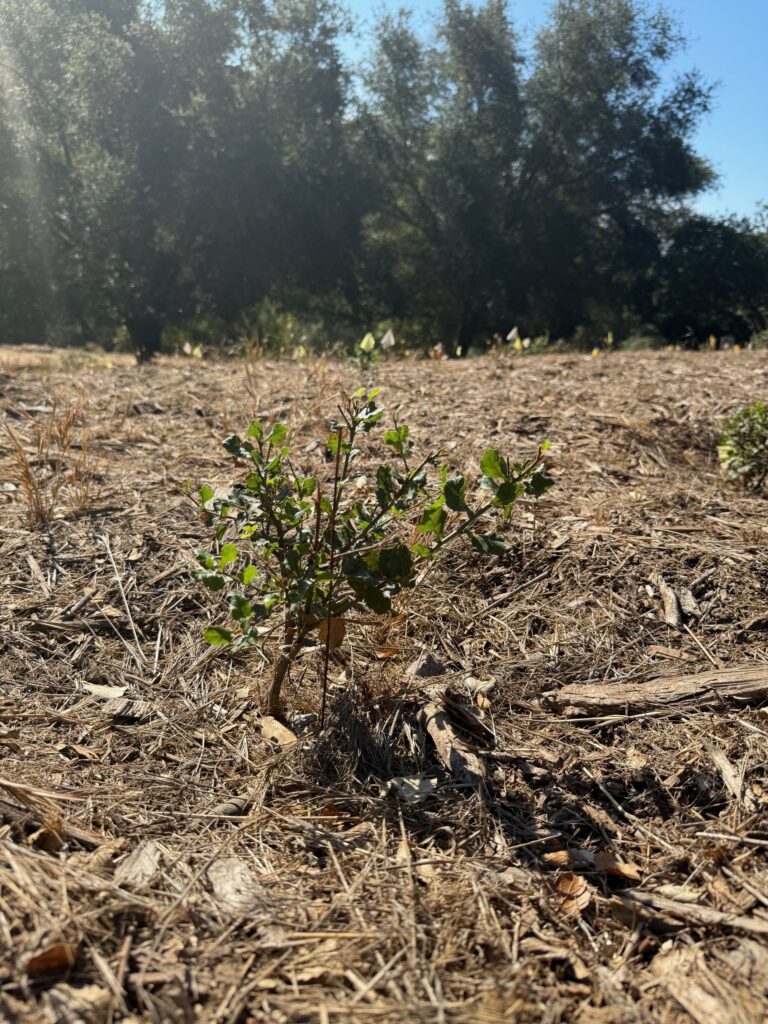
So far, the bulk of our data is supporting what Wells suspected all along – that oaks can act as a living fuelbreak. Of course, some maintenance is necessary, including trimming low branches or those that overhang your home, and removing dead fuels. But it’s a small price to pay for having the best of all worlds – safety, beauty, and all of the many benefits of biological diversity.
For more information about the Oak Fuel Break, please click HERE
This article was first published in the fall/winter 2025 issue of Oaks, a newsletter from the California Oak Coalition.
 Donate
Donate